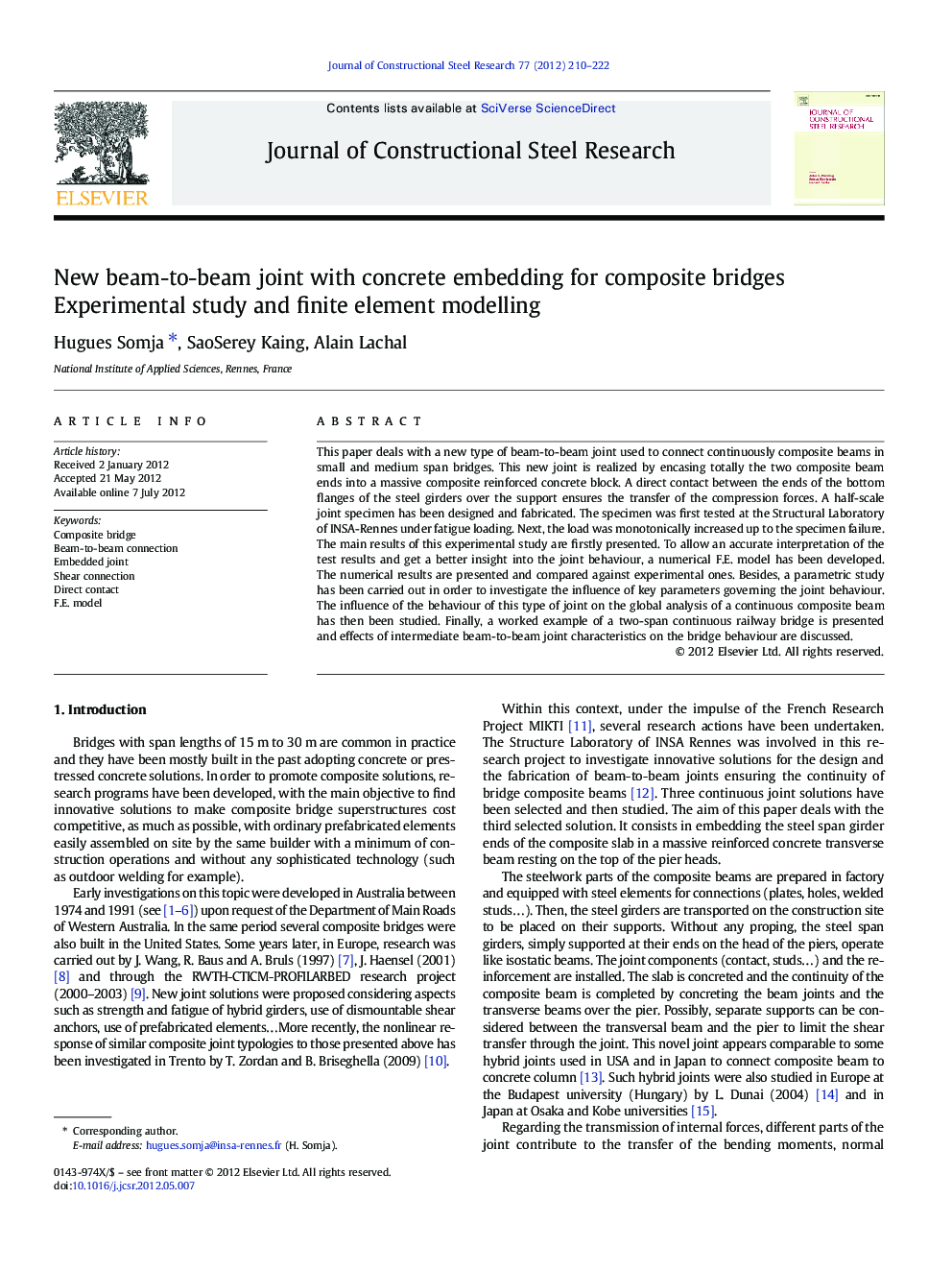| Article ID | Journal | Published Year | Pages | File Type |
|---|---|---|---|---|
| 285228 | Journal of Constructional Steel Research | 2012 | 13 Pages |
This paper deals with a new type of beam-to-beam joint used to connect continuously composite beams in small and medium span bridges. This new joint is realized by encasing totally the two composite beam ends into a massive composite reinforced concrete block. A direct contact between the ends of the bottom flanges of the steel girders over the support ensures the transfer of the compression forces. A half-scale joint specimen has been designed and fabricated. The specimen was first tested at the Structural Laboratory of INSA-Rennes under fatigue loading. Next, the load was monotonically increased up to the specimen failure. The main results of this experimental study are firstly presented. To allow an accurate interpretation of the test results and get a better insight into the joint behaviour, a numerical F.E. model has been developed. The numerical results are presented and compared against experimental ones. Besides, a parametric study has been carried out in order to investigate the influence of key parameters governing the joint behaviour. The influence of the behaviour of this type of joint on the global analysis of a continuous composite beam has then been studied. Finally, a worked example of a two-span continuous railway bridge is presented and effects of intermediate beam-to-beam joint characteristics on the bridge behaviour are discussed.
►New type of bridge joint ►Connects continuously composite beams by encasing totally composite beam ends into a massive concrete block ►Experimental and numerical study ►Effect on the global bridge behaviour analysed
